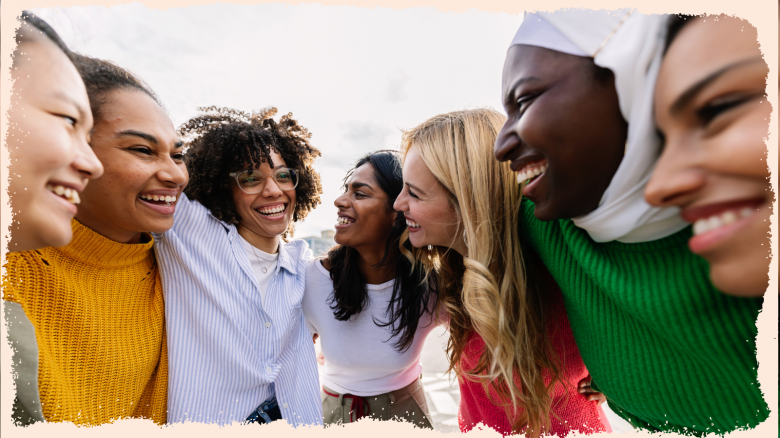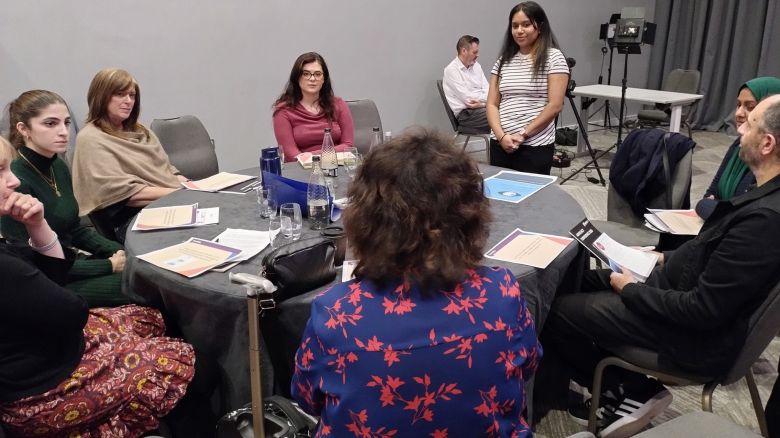Culturally appropriate advocacy: linking lived experience to systemic change
On Monday, we attended the National Advocacy Conference marking the start of Advocacy Awareness Week. The event included various talks on topics such as the importance of self-advocacy, beautiful advocacy, the intersectional dilemma of racialised stigma in mental health, and how we can shape the future of advocacy together.
There were also a series of interactive roundtable discussions, with our own Urjaa Chudasama (bid writer and former advocate) leading one on ‘culturally appropriate advocacy’.
Find out what she had to say below.

Culturally appropriate advocacy invites us to pause and consider the deeper question: who are our systems truly designed for?
In advocacy, we often talk about equality of access and fairness of process — but what happens when those very systems were built around assumptions that exclude? When the language, structures, and expectations reflect only part of the population’s experience, ‘one size fits all’ quickly becomes ‘one size fits some’.
My own journey into advocacy began with a commitment to social justice. With a background in global ethics and justice, I was drawn to the ways systems of power shape people’s lives — and how advocacy can challenge them.
Working directly with people showed me just how real these inequalities are. I saw how individuals from the global majority — communities that make up 80% of the world’s population — often had their voices dismissed, their needs misunderstood, or their cultural identities treated as barriers rather than strengths.
This wasn’t about isolated experiences; it reflected broader patterns. National statistics reveal that black men are detained under the Mental Health Act 3.6 times more often than white men, often without support before crisis, and with little post-section help. The LeDeR report (an annual review of the deaths of people with learning disabilities and/or autism) shows a 20-year gap in the median age of death between Asian British and white men. These figures show what many already know through lived experience: our systems are not equitable, and the effects are profound.
But beyond statistics are the everyday realities of microaggressions and implicit biases. These aren’t always overt acts of discrimination — they are small, repeated messages that tell someone they don’t quite belong. A professional misunderstanding a faith practice, a service dismissing cultural context, or a well-intentioned comment that stereotypes — all add to a cumulative weight.
In training, I use the Kerplunk analogy: each act of bias or dismissal is like removing a stick. Over time, the marbles — representing someone’s sense of confidence, safety, and belonging — start to fall. When someone reacts strongly to what seems like a ‘small thing’, what we’re really seeing is the impact of years of accumulated hurt.

Urjaa Chudasama leading an interactive roundtable discussion on‘culturally appropriate advocacy’ at the 2025 National Advocacy Conference
Culturally appropriate advocacy asks us to respond with curiosity, compassion, and cultural humility. It’s not about memorising cultural facts or getting everything right — it’s about being open to learning and reflection. We can’t know every tradition or custom, but we can approach people with respect and a willingness to understand what matters to them. It’s about asking rather than assuming, being mindful rather than defensive, and recognising that cultural humility is an ongoing practice, not a destination.
This approach also reframes advocacy’s purpose. It’s not only about supporting individuals — it’s about recognising patterns and challenging systems that perpetuate inequity. Advocates can act as bridges between personal stories and structural change. When we notice who isn’t being heard, or whose needs aren’t being met, we can use that insight to push for reform at organisational, local, and national levels.
Culturally appropriate advocacy isn’t just a method; it’s a mindset. One that connects empathy with critical awareness. It reminds us that real inclusion means moving beyond representation to transformation — reshaping systems so that everyone can access support in a way that recognises and respects their full identity.
By linking lived experience to systemic change, we honour both the individuals we support and the communities they belong to. In doing so, advocacy becomes not just about giving people a voice — but ensuring that when they speak, the system is ready to listen.